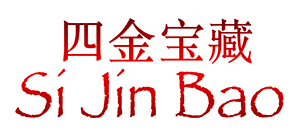Wáng Shū Hē and The Pulse Canon
王叔和 Wáng Shū Hē and The Pulse Canon
王叔和 Wáng Shū Hē is one of many revered Chinese medical scientists of the past whose hard work, dedication and expertise are spoken about and still consulted by medical professionals across the globe today.
王叔和 Wáng Shū Hē lived in the late second and third century, though the exact dates of his birth and death are unclear. Wáng Shū Hē was a native of Gaoping, what is now Gaoping County, Shanxi Province of China. He was born into nobility and lived during a few periods of Chinese history: The Eastern Han Dynasty (25–220 AD), The Three Kingdoms (220 to 280 AD) and Western Jin Dynasty (266–316 AD). His family status allowed him superior education and from an early age Wáng Shū Hē expressed interest in medical arts.
王叔和 Wáng Shū Hē immersed himself in ancient teachings. The young man studied all the classical medical texts he could access and researched pathogeny in depth. He trusted classical texts reverently, however, he did not follow their teachings blindly. He did his own research and study as well and learned from other experienced and skilled prominent doctors.
王叔和 Wáng Shū Hē: The Imperial Physician
His fame and medical expertise quickly acquired him the position of a medical doctor in the army of the warlord 曹操 Cao Cao. At the age of 32 王叔和 Wáng Shū Hē became an imperial physician. Later in life Dr. Wáng Shū Hē was appointed Minister of Imperial Medical Affairs.
His position and status at the Imperial Court allowed 王叔和 Wáng Shū Hē access to even more medical materials and literature. His strengths and interests were herbal prescriptions, food therapy, and diagnostics.
Many famous doctors have speculated that 王叔和 Wáng Shū Hē may have been 張仲景 Zhang Zhong Jing’s disciple. What is well known though is that 王叔和 Wáng Shū Hē played an integral role in preserving one of the most important classics of Traditional Chinese Medicine, Zhang Zhong Jing’s 傷寒論 Shang Han Lun, or “Treatise on Cold Damage Diseases”.
During that period of time there was chaotic infighting between different warlords and conquests in various parts of China. As a result of the turmoil, the original 傷寒論Shang Han Lun text was lost after its publication. 王叔和 Wáng Shū Hē made an immense effort to find and gather all of the pieces of the medical work from far and wide and then recompile them into one cohesive book which was then divided into two parts: Treatise on Febrile Disease and Golden Summary. If not for 王叔和 Wáng Shū Hē’s dedication and hard work, the invaluable text would have been lost to the streams of time.
脈經 Mài Jīng: The Pulse Canon
王叔和 Wáng Shū Hē’s magnus opus is 脈經 Mài Jīng, or the Pulse Canon which is considered the earliest monograph on sphygmology or the study and examination of the pulse in China.
“A famous physician 扁鵲 Bian Que (407 – 310 BC) examined the pulse of a prince who was pronounced dead, concluding that the man was just in a coma. An acupuncture treatment and an herbal medicine prescription quickly resuscitated the “dead” prince.”
Sphygmology or the study and examination of the pulse is an ancient practice and goes back thousands of years. The first written record of sphygmology can be found in the 黃帝內經 Huang Di Nei Jing, or Yellow Emperor’s Canon of Internal Medicine (300-200 BC). Even back then, physicians had the ability to “read” the unique patterns of an individual’s body, and as a result diagnose illness.
Sphygmology or the study and examination of the pulse had been mentioned in many Chinese medical classics and explained by various schools of thought before 王叔和 Wáng Shū Hē’s time. What Dr. Hē felt was that there was an urgent need to gather all of the knowledge and skill and compile it into one comprehensive monographic text devoted entirely to sphygmology. He believed that a text with all of the information would help physicians correctly apply pulse feeling diagnostic techniques.
And so 脈經 Mài Jīng, or the Pulse Canon was born. The text consists of 10 scrolls and 97 chapters. Many scientists believe that in this work 王叔和 Wáng Shū Hē highlighted the information and knowledge from the following schools of thought and lineages: Huangdi Neijing, Huangdi Bashiyi Nanjing, Bian Que, Zhang Zhong Jing, Cang Gong and Hua Tuo. In the 脈經 Mài Jīng the pulses are divided into 24 distinct categories. The differentiation is meant to determine whether a patient is sick, what kind of illness he or she is suffering from, the severity of the illness, and the ability of the patient to respond to treatment.
The Pulse Canon quickly gained popularity and credibility and served as a medical text of reference during the Jin Dynasty (266–420 AD), the Tang Dynasty (618–907 AD), the Song Dynasty (960–1279) and the Ming Dynasty (1368–1644). It was so influential that in 1313 a Persian historian, philosopher and medical doctor Avicenna included a translation of 脈經 Mài Jīng in his major work Canon of Medicine which was in use as a standard medical textbook at many Islamic and European universities until the early 19th century.
It is unclear how王叔和 Wáng Shū He died. Yet his timeless contributions to the humanity as a whole live on in his invaluable medical works referenced and consulted by professionals from around the world until today.
